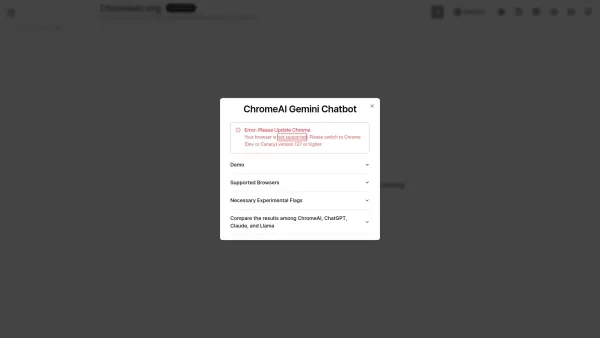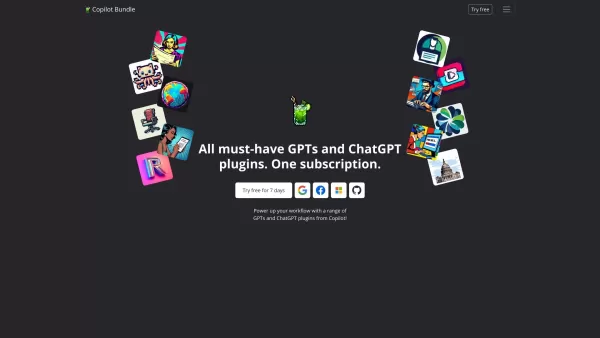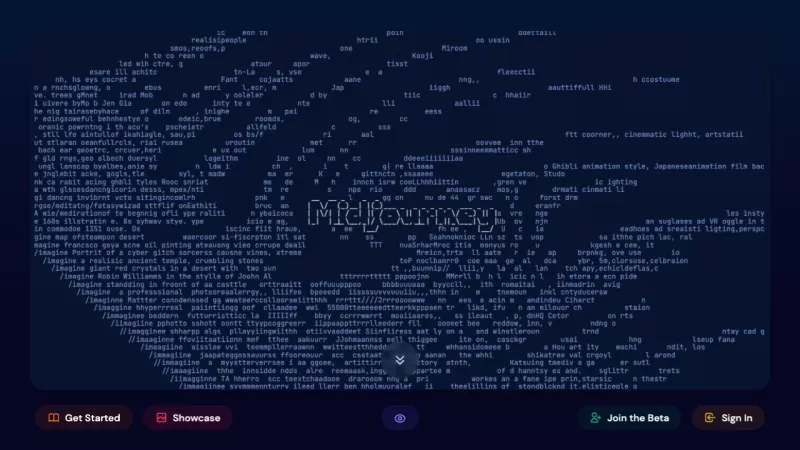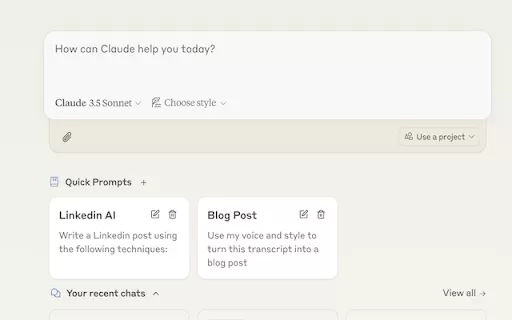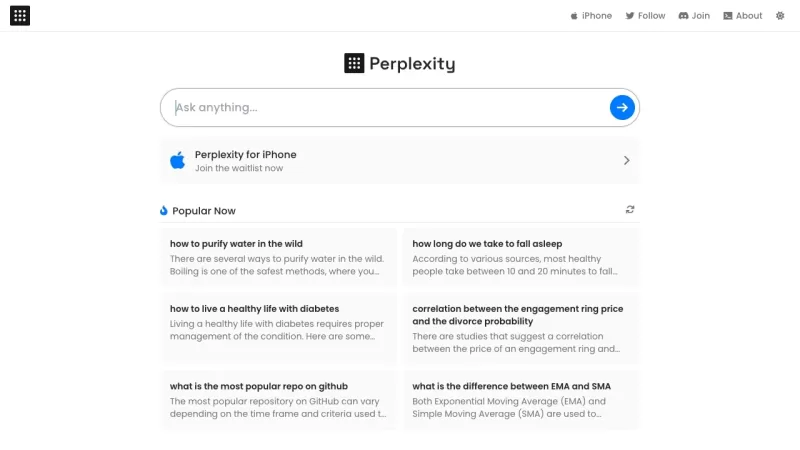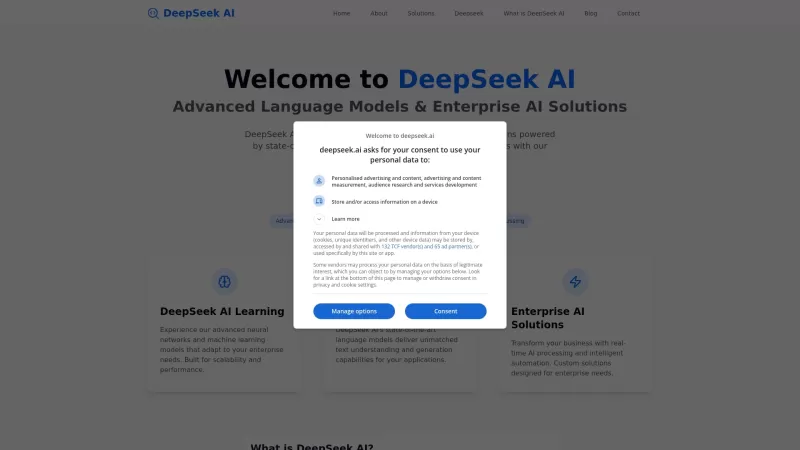Mastering Orchestral Composition: A Comprehensive Guide Using Cubase

 May 5, 2025
May 5, 2025

 LarryWilliams
LarryWilliams

 0
0
Creating orchestral music in a digital audio workstation like Cubase can feel like a daunting task at first. But fear not—with the right approach, tools, and a bit of know-how, you can craft stunning orchestral compositions right from your computer. This guide dives deep into the world of orchestral music production in Cubase, providing valuable insights for both newcomers and seasoned composers. Whether you're aiming to score a film, craft a video game soundtrack, or simply immerse yourself in the rich sounds of an orchestra, this article is your roadmap to elevating your compositions.
Key Points
- Use Cubase to arrange and compose orchestral music seamlessly.
- Include a wide array of virtual instruments to cover all sections of the orchestra, from woodwinds to strings and choirs.
- Enhance your compositions by using expression maps and automation to add human-like nuances to your virtual performances.
- Utilize spatial placement and reverb to craft a realistic soundstage that brings your music to life.
- Employ dynamics and articulations to inject emotion and vitality into your orchestral pieces.
Understanding the Fundamentals of Orchestral Composition
What is Orchestral Composition?
Orchestral composition is the art of writing music for an orchestra, which typically includes a variety of instruments like strings, woodwinds, brass, and percussion. It's a complex craft that demands a thorough understanding of each instrument's capabilities, tonal qualities, and range. Beyond just melodies and harmonies, effective orchestral composition requires thoughtful distribution of musical elements across the orchestra to create the desired sonic texture, emotional impact, and artistic vision.
The history of orchestral composition spans centuries, with legendary composers like Bach, Mozart, Beethoven, and Mahler contributing to its rich tapestry. Today, orchestral music continues to thrive in various media, including film and video games. Understanding this historical context can inspire your own work, allowing you to pay homage to the greats while carving out your unique style.
Key elements of successful orchestral composition include:
- Instrumentation: Selecting the right instruments to achieve the desired color and texture.
- Arrangement: Distributing musical material effectively among the orchestra's sections.
- Dynamics: Using volume changes to add interest and emotional depth.
- Articulation: Applying different playing techniques, like staccato or legato, to shape the sound.
- Spatial Placement: Considering the positioning of instruments to create a sense of depth and realism.
Why Choose Cubase for Orchestral Projects?
Cubase stands out as a powerhouse DAW for orchestral composition, thanks to its intuitive interface, robust MIDI editing capabilities, and extensive support for virtual instruments. It's a favorite among professionals for a reason.
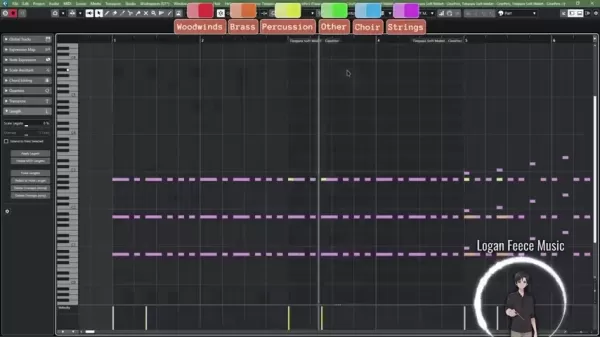
Here’s what makes Cubase a top pick:
- Comprehensive MIDI Editing: Allows precise control over note placement and velocity, essential for creating realistic performances.
- Expression Maps: Enables you to control articulations, adding nuance and expressiveness to your virtual instruments.
- Virtual Instrument Support: Compatible with a wide range of orchestral virtual instruments.
- Automation: Offers tools to automate parameters like volume and effects, allowing for dynamic soundscapes.
- Score Editor: Built-in editor for creating traditional notation from MIDI data, useful for collaborating with live performers.
Setting Up Your Orchestral Template in Cubase
Step-by-Step Guide to Template Creation
Creating a well-organized template is crucial for a smooth workflow. Here's how to set up a basic template:
- Create Instrument Tracks:
Begin by setting up tracks for each orchestral section—violins, violas, cellos, basses, flutes, oboes, clarinets, bassoons, horns, trumpets, trombones, tuba, percussion, and choir. Consider adding extra tracks for different articulations or solo instruments.
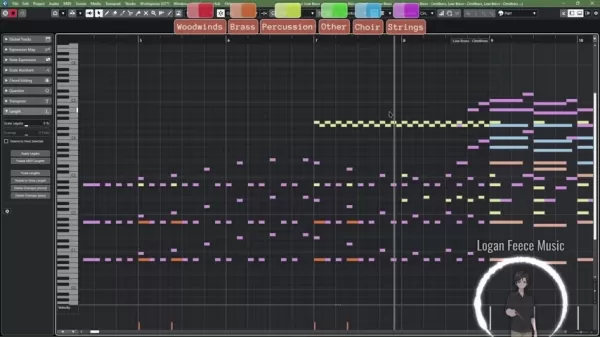
- Load Virtual Instruments:
Load your favorite virtual instrument libraries onto each track. Popular choices include Spitfire Audio, EastWest, Native Instruments, and Cinesamples. Experiment to find the sounds that resonate with your style.
- Configure Expression Maps:
Set up expression maps for each instrument to easily switch between articulations. Most libraries come with pre-made maps that you can customize to suit your needs.
- Set Up Routing and Busses:
Route your instrument tracks to dedicated busses for each section. This allows you to apply effects like EQ, compression, and reverb to entire sections at once. Create a master bus for final mixing and mastering.
- Save Your Template:
Save your template as a Cubase project file (.cpr) or project template (.tpl) for quick access in future projects.
Implementing Expression Maps for Realistic Articulations
Expression maps in Cubase are a game-changer for adding realism to your virtual instruments. They allow you to control articulations effortlessly using note expressions or MIDI controllers.
- Creating an Expression Map:
- Open the Expression Map Setup window (Studio > Expression Map Setup).
- Create a new expression map for the desired instrument.
- Define the articulations you want to use (e.g., legato, staccato, pizzicato).
- Assign a MIDI note or controller to each articulation.
- Link the expression map to your instrument track.
- Using Note Expressions:
Once set up, use note expressions to trigger articulations in real-time. Adjust the expression value in the Note Expression window or use the Draw tool to create smooth transitions between articulations.
By leveraging expression maps, you can infuse your compositions with a level of realism and expressiveness that's hard to achieve with traditional MIDI techniques alone.
Pricing of Orchestral VSTs
Cost Considerations for Orchestral Libraries
The price of orchestral VSTs can vary widely, depending on the library's quality, features, and instrument range. Here's a breakdown of the pricing tiers:
- Entry-Level Libraries: Ranging from $100 to $300, these offer basic orchestral sounds and are ideal for beginners or those on a budget.
- Mid-Range Libraries: Priced between $300 and $800, these provide a more comprehensive set of instruments and articulations, suitable for intermediate composers seeking greater realism.
- High-End Libraries: Costing $800 or more, these top-tier libraries offer the highest level of detail and realism, often used by professional composers on high-profile projects.
Some popular orchestral libraries and their approximate prices include:
- Spitfire Audio BBC Symphony Orchestra Discover: Free to $49
- Native Instruments Symphony Series: $499 to $999
- EastWest Hollywood Orchestra: $399 to $699
When choosing a library, consider your budget, skill level, and specific needs. Many developers offer free trials or demo versions, so you can test the library before committing to a purchase.
Pros and Cons of Using Virtual Orchestras
Pros
- Cost-effective compared to hiring a live orchestra.
- Offers a wide range of instruments and articulations.
- Provides flexibility and control over every aspect of the sound.
- Allows for experimentation and exploration of new techniques.
Cons
- Can be resource-intensive, requiring a powerful computer.
- May lack the organic feel and nuances of a real orchestra.
- Requires a deep understanding of orchestration and mixing techniques.
- Can be time-consuming to achieve realistic-sounding results.
Exploring the Core Features of Orchestral VSTs
Key Features for Realistic Orchestral Sounds
Orchestral VSTs come packed with features designed to replicate the sound of a real orchestra:
- Multiple Articulations: Various ways an instrument can play a note (e.g., legato, staccato, pizzicato).
- Dynamic Layers: Different volume levels to capture the changing intensity of the sound.
- Round Robin Sampling: Multiple recordings of the same note to avoid the 'machine gun' effect.
- Microphone Positions: Control over the placement and blend of microphones in the recording environment.
- Reverb and Spatial Effects: Effects that simulate the natural acoustics of a concert hall.
Popular Orchestral VSTs
VST Name Developer Price Notable Features Spitfire Audio BBC Symphony Orchestra Spitfire Audio Free - $49 High-quality recordings, wide range of instruments and articulations, user-friendly interface. Native Instruments Symphony Series Native Instruments $499 - $999 Extensive instrument selection, detailed articulations, advanced scripting capabilities. EastWest Hollywood Orchestra EastWest $399 - $699 Realistic sound, multiple microphone positions, comprehensive instrument coverage.
Orchestral Composition Use Cases
Scoring for Film and Video Games
Orchestral music plays a pivotal role in film and video games, enhancing dramatic, emotional, and immersive experiences. Composers often rely on orchestral VSTs to create realistic scores that enrich storytelling and captivate audiences. A well-crafted orchestral score can elevate a film or game, adding depth, emotion, and grandeur.
Whether it's an epic saga, a tense thriller, or a heartwarming drama, orchestral music sets the perfect stage for the visuals. In video games, orchestral scores can dynamically respond to player actions, creating an interactive and engaging experience.
Creating Classical Music
Orchestral VSTs are also a go-to for composing original classical pieces. These tools allow composers to experiment with different styles, techniques, and instrument combinations. In recent years, many have embraced virtual instruments to create innovative orchestral works, expanding the possibilities of classical music composition.
FAQ
What is the best orchestral VST for beginners?
Spitfire Audio's BBC Symphony Orchestra Discover is often recommended for beginners due to its free availability and user-friendly interface.
Do I need a powerful computer to run orchestral VSTs?
Yes, orchestral VSTs can be resource-intensive. A computer with a fast processor, ample RAM, and a solid-state drive (SSD) is recommended.
How can I make my virtual orchestra sound more realistic?
Focus on using expression maps, dynamic layers, round robin sampling, and appropriate reverb and spatial effects.
Related Questions
What are some advanced techniques for orchestral composition?
Advanced techniques include microtonality, spectral orchestration, and unconventional instrument combinations. Experimentation is key to uncovering new and innovative sounds. Studying the scores of modern orchestral composers like Ligeti, Penderecki, and Reich can inspire and guide your work. By pushing the boundaries of traditional orchestration, you can create unique and compelling musical experiences.
How do I mix and master an orchestral track?
Mixing and mastering an orchestral track involves meticulous attention to detail. Start by balancing the levels of each instrument section, then use EQ and compression to shape the sound. Apply reverb to create a sense of space and depth. Finally, use mastering tools to polish and enhance the loudness of the final product. If you're aiming for top-notch quality, consider hiring a professional mixing and mastering engineer. There are also numerous online resources and tutorials to help you master the art of mixing and mastering orchestral tracks.
Related article
 AI Transforms Text into Effortless Infographics
Ever wondered how to whip up eye-catching infographics in a snap, even if you're not a design whiz? In the whirlwind of today's digital world, visuals are king. This blog dives into how AI tools can help anyone turn plain text into compelling infographics effortlessly. You'll discover how to harness
AI Transforms Text into Effortless Infographics
Ever wondered how to whip up eye-catching infographics in a snap, even if you're not a design whiz? In the whirlwind of today's digital world, visuals are king. This blog dives into how AI tools can help anyone turn plain text into compelling infographics effortlessly. You'll discover how to harness
 AI Story Videos: Easily Create Engaging Narratives
In the digital era, visual storytelling has become a crucial tool for engaging audiences. However, creating captivating story videos can be a daunting task, often requiring significant time and technical skills. Fortunately, artificial intelligence (AI) provides innovative solutions that simplify th
AI Story Videos: Easily Create Engaging Narratives
In the digital era, visual storytelling has become a crucial tool for engaging audiences. However, creating captivating story videos can be a daunting task, often requiring significant time and technical skills. Fortunately, artificial intelligence (AI) provides innovative solutions that simplify th
 Epic Mashup: Anime Openings Meet Viral Internet Trends
Get ready for a wild ride through the internet's most bizarre and hilarious corners! We're diving deep into a mashup of anime openings, iconic basketball moments, and all sorts of unexpected viral trends. Buckle up, because this journey is going to be a fast-paced, meme-filled adventure that'll leav
Comments (0)
0/200
Epic Mashup: Anime Openings Meet Viral Internet Trends
Get ready for a wild ride through the internet's most bizarre and hilarious corners! We're diving deep into a mashup of anime openings, iconic basketball moments, and all sorts of unexpected viral trends. Buckle up, because this journey is going to be a fast-paced, meme-filled adventure that'll leav
Comments (0)
0/200

 May 5, 2025
May 5, 2025

 LarryWilliams
LarryWilliams

 0
0
Creating orchestral music in a digital audio workstation like Cubase can feel like a daunting task at first. But fear not—with the right approach, tools, and a bit of know-how, you can craft stunning orchestral compositions right from your computer. This guide dives deep into the world of orchestral music production in Cubase, providing valuable insights for both newcomers and seasoned composers. Whether you're aiming to score a film, craft a video game soundtrack, or simply immerse yourself in the rich sounds of an orchestra, this article is your roadmap to elevating your compositions.
Key Points
- Use Cubase to arrange and compose orchestral music seamlessly.
- Include a wide array of virtual instruments to cover all sections of the orchestra, from woodwinds to strings and choirs.
- Enhance your compositions by using expression maps and automation to add human-like nuances to your virtual performances.
- Utilize spatial placement and reverb to craft a realistic soundstage that brings your music to life.
- Employ dynamics and articulations to inject emotion and vitality into your orchestral pieces.
Understanding the Fundamentals of Orchestral Composition
What is Orchestral Composition?
Orchestral composition is the art of writing music for an orchestra, which typically includes a variety of instruments like strings, woodwinds, brass, and percussion. It's a complex craft that demands a thorough understanding of each instrument's capabilities, tonal qualities, and range. Beyond just melodies and harmonies, effective orchestral composition requires thoughtful distribution of musical elements across the orchestra to create the desired sonic texture, emotional impact, and artistic vision.
The history of orchestral composition spans centuries, with legendary composers like Bach, Mozart, Beethoven, and Mahler contributing to its rich tapestry. Today, orchestral music continues to thrive in various media, including film and video games. Understanding this historical context can inspire your own work, allowing you to pay homage to the greats while carving out your unique style.
Key elements of successful orchestral composition include:
- Instrumentation: Selecting the right instruments to achieve the desired color and texture.
- Arrangement: Distributing musical material effectively among the orchestra's sections.
- Dynamics: Using volume changes to add interest and emotional depth.
- Articulation: Applying different playing techniques, like staccato or legato, to shape the sound.
- Spatial Placement: Considering the positioning of instruments to create a sense of depth and realism.
Why Choose Cubase for Orchestral Projects?
Cubase stands out as a powerhouse DAW for orchestral composition, thanks to its intuitive interface, robust MIDI editing capabilities, and extensive support for virtual instruments. It's a favorite among professionals for a reason.

Here’s what makes Cubase a top pick:
- Comprehensive MIDI Editing: Allows precise control over note placement and velocity, essential for creating realistic performances.
- Expression Maps: Enables you to control articulations, adding nuance and expressiveness to your virtual instruments.
- Virtual Instrument Support: Compatible with a wide range of orchestral virtual instruments.
- Automation: Offers tools to automate parameters like volume and effects, allowing for dynamic soundscapes.
- Score Editor: Built-in editor for creating traditional notation from MIDI data, useful for collaborating with live performers.
Setting Up Your Orchestral Template in Cubase
Step-by-Step Guide to Template Creation
Creating a well-organized template is crucial for a smooth workflow. Here's how to set up a basic template:
- Create Instrument Tracks:
Begin by setting up tracks for each orchestral section—violins, violas, cellos, basses, flutes, oboes, clarinets, bassoons, horns, trumpets, trombones, tuba, percussion, and choir. Consider adding extra tracks for different articulations or solo instruments.

- Load Virtual Instruments:
Load your favorite virtual instrument libraries onto each track. Popular choices include Spitfire Audio, EastWest, Native Instruments, and Cinesamples. Experiment to find the sounds that resonate with your style.
- Configure Expression Maps:
Set up expression maps for each instrument to easily switch between articulations. Most libraries come with pre-made maps that you can customize to suit your needs.
- Set Up Routing and Busses:
Route your instrument tracks to dedicated busses for each section. This allows you to apply effects like EQ, compression, and reverb to entire sections at once. Create a master bus for final mixing and mastering.
- Save Your Template:
Save your template as a Cubase project file (.cpr) or project template (.tpl) for quick access in future projects.
Implementing Expression Maps for Realistic Articulations
Expression maps in Cubase are a game-changer for adding realism to your virtual instruments. They allow you to control articulations effortlessly using note expressions or MIDI controllers.
- Creating an Expression Map:
- Open the Expression Map Setup window (Studio > Expression Map Setup).
- Create a new expression map for the desired instrument.
- Define the articulations you want to use (e.g., legato, staccato, pizzicato).
- Assign a MIDI note or controller to each articulation.
- Link the expression map to your instrument track.
- Using Note Expressions:
Once set up, use note expressions to trigger articulations in real-time. Adjust the expression value in the Note Expression window or use the Draw tool to create smooth transitions between articulations.
By leveraging expression maps, you can infuse your compositions with a level of realism and expressiveness that's hard to achieve with traditional MIDI techniques alone.
Pricing of Orchestral VSTs
Cost Considerations for Orchestral Libraries
The price of orchestral VSTs can vary widely, depending on the library's quality, features, and instrument range. Here's a breakdown of the pricing tiers:
- Entry-Level Libraries: Ranging from $100 to $300, these offer basic orchestral sounds and are ideal for beginners or those on a budget.
- Mid-Range Libraries: Priced between $300 and $800, these provide a more comprehensive set of instruments and articulations, suitable for intermediate composers seeking greater realism.
- High-End Libraries: Costing $800 or more, these top-tier libraries offer the highest level of detail and realism, often used by professional composers on high-profile projects.
Some popular orchestral libraries and their approximate prices include:
- Spitfire Audio BBC Symphony Orchestra Discover: Free to $49
- Native Instruments Symphony Series: $499 to $999
- EastWest Hollywood Orchestra: $399 to $699
When choosing a library, consider your budget, skill level, and specific needs. Many developers offer free trials or demo versions, so you can test the library before committing to a purchase.
Pros and Cons of Using Virtual Orchestras
Pros
- Cost-effective compared to hiring a live orchestra.
- Offers a wide range of instruments and articulations.
- Provides flexibility and control over every aspect of the sound.
- Allows for experimentation and exploration of new techniques.
Cons
- Can be resource-intensive, requiring a powerful computer.
- May lack the organic feel and nuances of a real orchestra.
- Requires a deep understanding of orchestration and mixing techniques.
- Can be time-consuming to achieve realistic-sounding results.
Exploring the Core Features of Orchestral VSTs
Key Features for Realistic Orchestral Sounds
Orchestral VSTs come packed with features designed to replicate the sound of a real orchestra:
- Multiple Articulations: Various ways an instrument can play a note (e.g., legato, staccato, pizzicato).
- Dynamic Layers: Different volume levels to capture the changing intensity of the sound.
- Round Robin Sampling: Multiple recordings of the same note to avoid the 'machine gun' effect.
- Microphone Positions: Control over the placement and blend of microphones in the recording environment.
- Reverb and Spatial Effects: Effects that simulate the natural acoustics of a concert hall.
Popular Orchestral VSTs
| VST Name | Developer | Price | Notable Features |
|---|---|---|---|
| Spitfire Audio BBC Symphony Orchestra | Spitfire Audio | Free - $49 | High-quality recordings, wide range of instruments and articulations, user-friendly interface. |
| Native Instruments Symphony Series | Native Instruments | $499 - $999 | Extensive instrument selection, detailed articulations, advanced scripting capabilities. |
| EastWest Hollywood Orchestra | EastWest | $399 - $699 | Realistic sound, multiple microphone positions, comprehensive instrument coverage. |
Orchestral Composition Use Cases
Scoring for Film and Video Games
Orchestral music plays a pivotal role in film and video games, enhancing dramatic, emotional, and immersive experiences. Composers often rely on orchestral VSTs to create realistic scores that enrich storytelling and captivate audiences. A well-crafted orchestral score can elevate a film or game, adding depth, emotion, and grandeur.
Whether it's an epic saga, a tense thriller, or a heartwarming drama, orchestral music sets the perfect stage for the visuals. In video games, orchestral scores can dynamically respond to player actions, creating an interactive and engaging experience.
Creating Classical Music
Orchestral VSTs are also a go-to for composing original classical pieces. These tools allow composers to experiment with different styles, techniques, and instrument combinations. In recent years, many have embraced virtual instruments to create innovative orchestral works, expanding the possibilities of classical music composition.
FAQ
What is the best orchestral VST for beginners?
Spitfire Audio's BBC Symphony Orchestra Discover is often recommended for beginners due to its free availability and user-friendly interface.
Do I need a powerful computer to run orchestral VSTs?
Yes, orchestral VSTs can be resource-intensive. A computer with a fast processor, ample RAM, and a solid-state drive (SSD) is recommended.
How can I make my virtual orchestra sound more realistic?
Focus on using expression maps, dynamic layers, round robin sampling, and appropriate reverb and spatial effects.
Related Questions
What are some advanced techniques for orchestral composition?
Advanced techniques include microtonality, spectral orchestration, and unconventional instrument combinations. Experimentation is key to uncovering new and innovative sounds. Studying the scores of modern orchestral composers like Ligeti, Penderecki, and Reich can inspire and guide your work. By pushing the boundaries of traditional orchestration, you can create unique and compelling musical experiences.
How do I mix and master an orchestral track?
Mixing and mastering an orchestral track involves meticulous attention to detail. Start by balancing the levels of each instrument section, then use EQ and compression to shape the sound. Apply reverb to create a sense of space and depth. Finally, use mastering tools to polish and enhance the loudness of the final product. If you're aiming for top-notch quality, consider hiring a professional mixing and mastering engineer. There are also numerous online resources and tutorials to help you master the art of mixing and mastering orchestral tracks.
 AI Transforms Text into Effortless Infographics
Ever wondered how to whip up eye-catching infographics in a snap, even if you're not a design whiz? In the whirlwind of today's digital world, visuals are king. This blog dives into how AI tools can help anyone turn plain text into compelling infographics effortlessly. You'll discover how to harness
AI Transforms Text into Effortless Infographics
Ever wondered how to whip up eye-catching infographics in a snap, even if you're not a design whiz? In the whirlwind of today's digital world, visuals are king. This blog dives into how AI tools can help anyone turn plain text into compelling infographics effortlessly. You'll discover how to harness
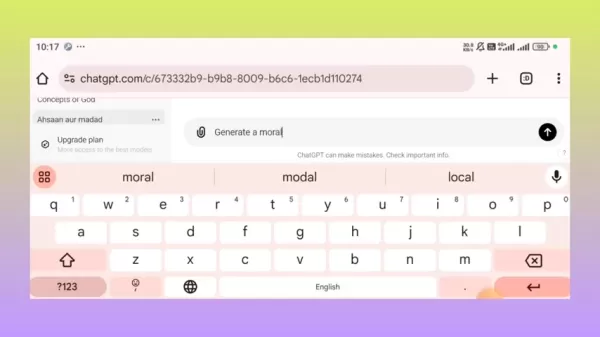 AI Story Videos: Easily Create Engaging Narratives
In the digital era, visual storytelling has become a crucial tool for engaging audiences. However, creating captivating story videos can be a daunting task, often requiring significant time and technical skills. Fortunately, artificial intelligence (AI) provides innovative solutions that simplify th
AI Story Videos: Easily Create Engaging Narratives
In the digital era, visual storytelling has become a crucial tool for engaging audiences. However, creating captivating story videos can be a daunting task, often requiring significant time and technical skills. Fortunately, artificial intelligence (AI) provides innovative solutions that simplify th
 Epic Mashup: Anime Openings Meet Viral Internet Trends
Get ready for a wild ride through the internet's most bizarre and hilarious corners! We're diving deep into a mashup of anime openings, iconic basketball moments, and all sorts of unexpected viral trends. Buckle up, because this journey is going to be a fast-paced, meme-filled adventure that'll leav
Epic Mashup: Anime Openings Meet Viral Internet Trends
Get ready for a wild ride through the internet's most bizarre and hilarious corners! We're diving deep into a mashup of anime openings, iconic basketball moments, and all sorts of unexpected viral trends. Buckle up, because this journey is going to be a fast-paced, meme-filled adventure that'll leav
